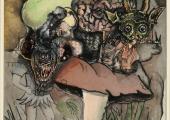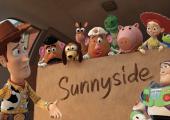The Chapman Brothers: Children's Art Commission, Whitechapel Gallery



The 15 years since Disney released the original Toy Story have seen a seismic boom in the computer animation field that has prompted every major movie studio to get in on the act. Relatively cheap to make, accessible to both adults and children and easily converted to 3D, these digital cash cows have become as much a part of a Hollywood balance sheet as the action-packed thriller, low-brow comedy or all-star contemporary reboot.

It took Picasso four years to learn to paint like Raphael, but it took him a lifetime to paint like a child, or so he said. For Brancusi it wasn‘t a case of relearning childhood, but of being careful not to lose it in the first place. “When we are no longer children we are already dead,” he said.

A father keeps his three adult children in a state of retarded development. They are deprived of books, education, television, indeed denied any access to the world beyond the electronic gates marking the perimeter edge of their known territory. In the place of knowledge is disinformation, disseminated on tapes. The sea is a leather chair, a zombie is a yellow flower, a vagina is a keyboard. And so on. In all this the mother is quiescent, complicit. The father is an absolute patriarch, the source of all morality and law.

There are gunshots outside in the street, a boy sits behind his front door desperate to get to ballet class, the two sides of his life colliding in front of his eyes - reality and dream. It’s a favela in Rio, one of the most dangerous cities in the world, a vast estate of poverty riddled with drug crime and addicted young lads with no future other than dealing, until they get shot or jailed. Ballet... well, what an irrelevance.